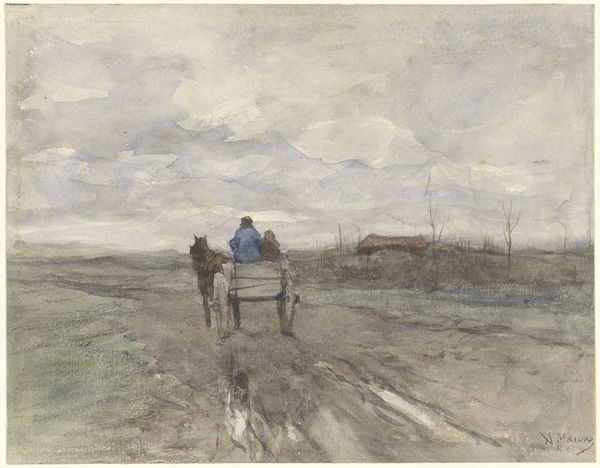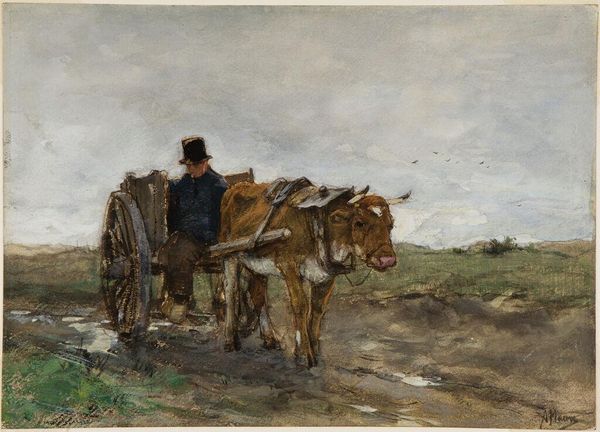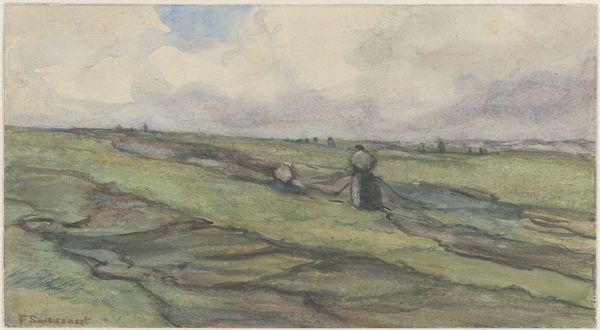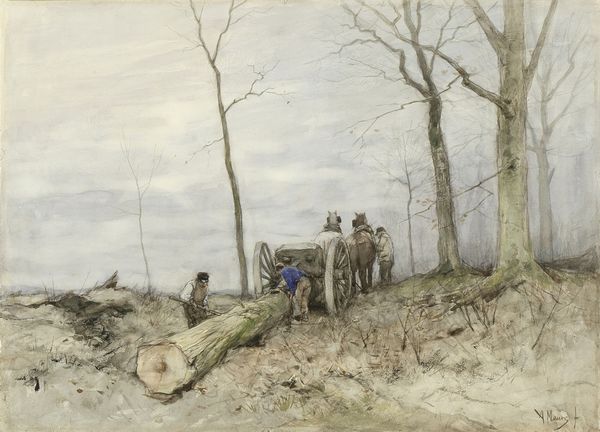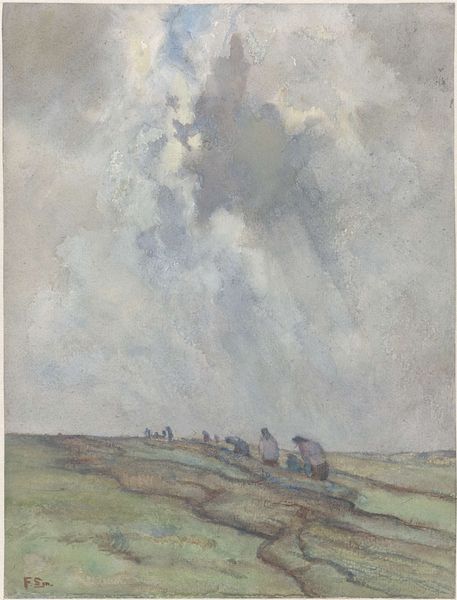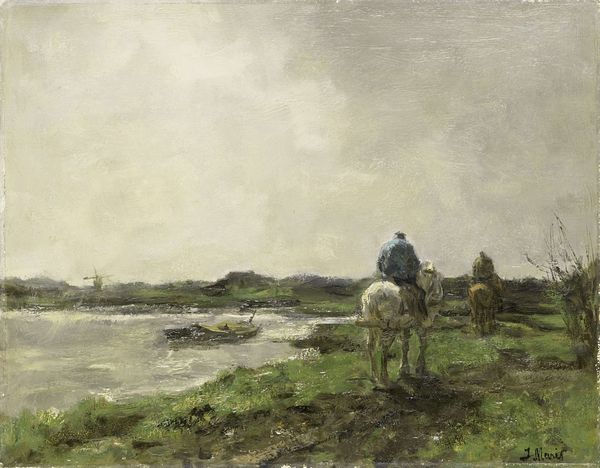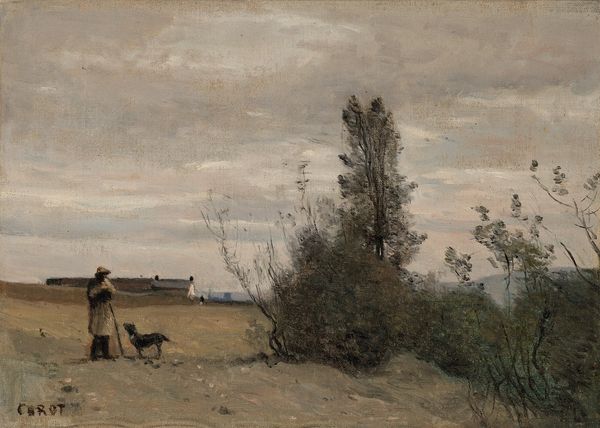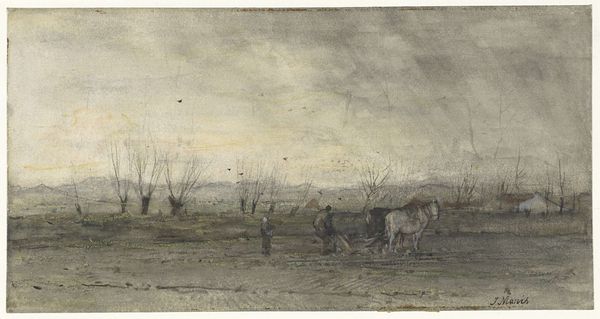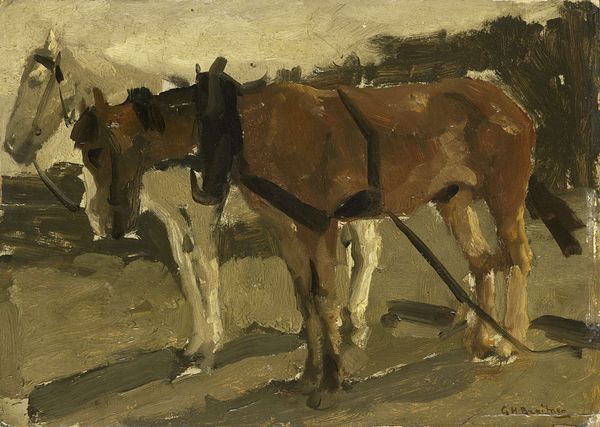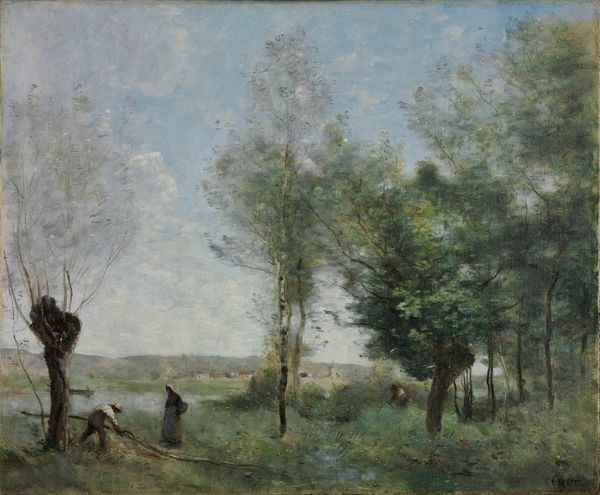
painting, watercolor
#
dutch-golden-age
#
painting
#
impressionism
#
landscape
#
watercolor
#
genre-painting
#
watercolor
#
realism
Dimensions: height 310 mm, width 225 mm
Copyright: Rijks Museum: Open Domain
Curator: This watercolor by Jacob Maris, titled "Ploegende boer," or "Plowing Farmer," was created sometime between 1847 and 1899. It's currently held here at the Rijksmuseum. Editor: It has this striking melancholic atmosphere. The cool palette and expansive sky kind of overwhelm the small figures of the farmer and the horse. Curator: That sense of melancholy is certainly a thread throughout much Dutch art of the period, often reflecting a national mood shaped by socio-economic realities. Here, Maris gives us a slice of agrarian life, a genre painting, yes, but also something more. It's less about romanticizing rural life and more about showing the often harsh reality. Editor: Absolutely, and you see that harsh reality reflected in the materiality itself. It's a watercolor, but it's applied in layers that create a density, particularly in the wet earth. It isn't a light, carefree wash. You can almost feel the weight and resistance of the soil. And what about that contrast of labor and consumption represented by the birds feeding of what is plowed and seeded in the soil? Curator: That connects to a wider debate within the art world at the time – the rise of Realism, but also early threads of Impressionism. Maris occupies an interesting spot in that spectrum. He presents a straightforward scene, but he is also preoccupied with capturing a fleeting atmosphere, a specific type of light, a sense of place tied to a precise moment. His ties with the Hague School seem to reinforce these concerns as well. Editor: The medium helps, right? The translucency of watercolor allows him to suggest so much with so little detail. It is so evocative and raw that it almost hurts, and, well, a nice change from all the pompous and contrived art you see in other museums and collections. Curator: I agree. Its power lies in its understatement and the tensions that arise from depicting the common man toiling on land in all its humbleness, a direct commentary on the socioeconomic context of the time. It also mirrors similar scenes painted during the Dutch Golden Age with a modern twist of heightened individual freedom in art. Editor: Thinking about the tools, the labor… It makes me appreciate the final loaf of bread on my table even more. It is not just sustenance; there is also this embodied work etched into the fibers of Maris’s paper and painting. Curator: A great reminder that art can be both aesthetically compelling and a reflection on social values.
Comments
No comments
Be the first to comment and join the conversation on the ultimate creative platform.
